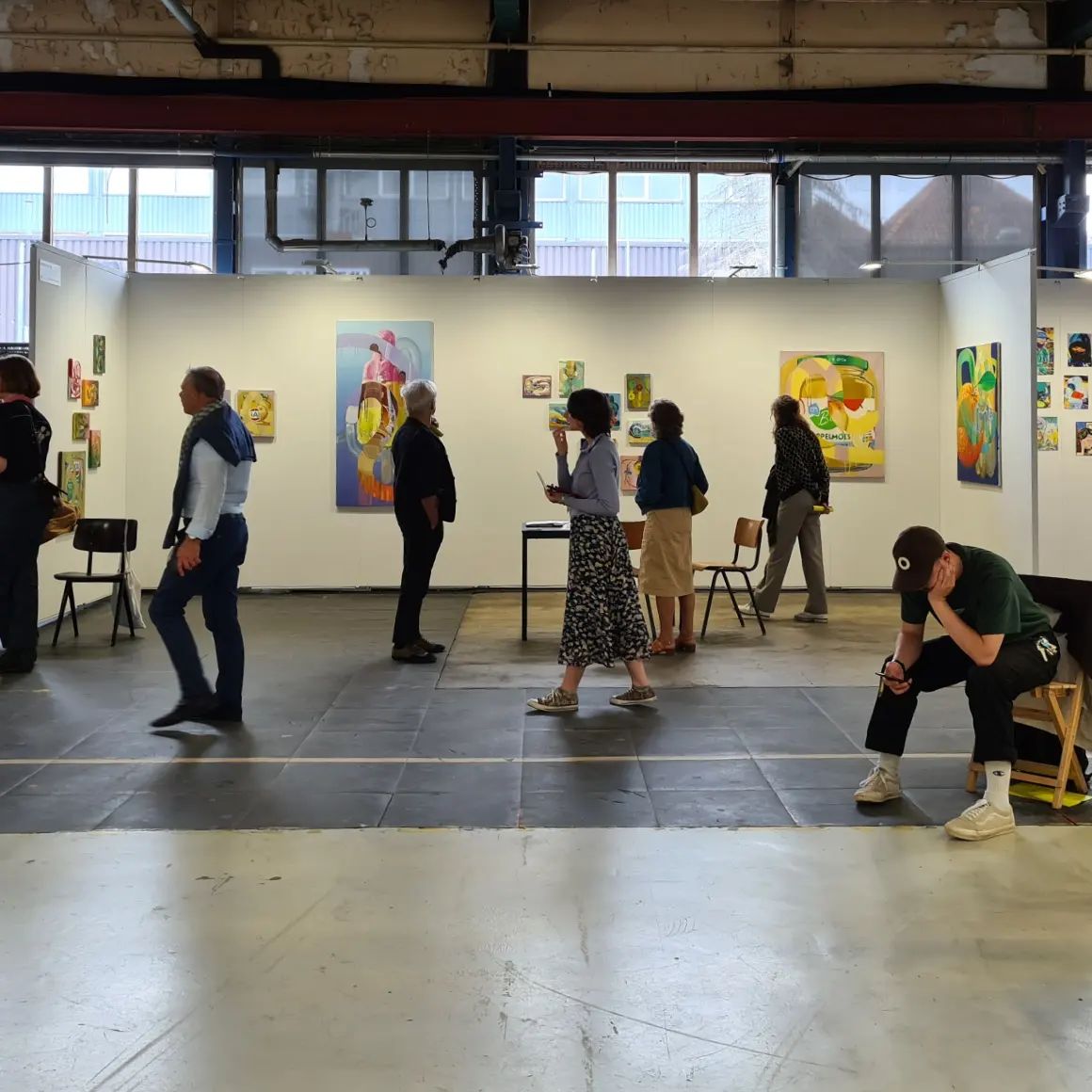PAINTING SPOTLIGHT
- ronaldboom
- Jun 19, 2024
- 3 min read

Created in 2022 as part of the series Swipes & Simulacra, the works 1921 (Appelmoes groot) (left) and 1931 (Minute maid) (right) were displayed at This Art Fair in the Kromhouthal, Amsterdam. Painting holds immense significance for me. A person lives, on average, four thousand weeks, and I rarely create more than one work per week. Therefore, I mark a period by numbering my paintings with the week of my life in which the work was made.
In this spotlight post, you will find more information about the Swipes & Simulacra series, the works, related publications, and if you are interested, the prices of these two paintings. At the beginning of each year, I take the time for a research period, during which the painting unfolds itself. Feel free to explore my website for more information and see many other works.

The shape of language
"Painter Ronald Boom uses text swipes as the basis for his paintings. He tells me that he used to use a self-invented secret code in his diary. His fascination with alternate forms of text, where meaning is bypassed or concealed, is evident in his paintings. The text swipes he creates refer to how text is input on a mobile phone without lifting the finger from the keyboard (swiping). This ignores a pattern that corresponds to the word being typed. This method of text input ensures that each word, besides having meaning, also has a logogram-like form. This form is not necessarily recognizable on its own, but it is for those who swipe. For instance, Boom painted the shape of the swipe for the word 'pea soup,' over which he then painted an actual can of pea soup. Swiping, for him, is like painting; a fluid line with a brush can appear like a finger stroke on a touchscreen. Boom creates, in an almost illustrative manner, a play between word image and word, without completely losing sight of the meaning."
Swipes and Simulacra
After graduating from the Gerrit Rietveld Academy in 2021, I entered a period of letting go and exploration. Driven by the necessity to pause and reflect in the rhythm of the seasons, I started anew, listening and observing. From this receptive approach, 1908 (clouds and verticals) emerged. I pondered the ideas of the French philosopher Baudrillard about the alienation from the natural world (described in the book Simulacra and Simulation, where humanity has lost contact with the real world by creating an image of it based on what is seen in the media) and his critique of the consumer society. This led to a series in which I combine natural and artificial elements. The works 1913 (Cherries 1, Cherries 2), where I juxtapose real cherries and cherry candies (on an artificial plane), are part of this series.

Following this, I integrated language into the series in the form of fluid text swipes (a quick method of text input on a keyboard without lifting your finger from the screen) and a layered approach inspired by the work of Esteban Cabeza de Baca. This can be seen in 1921 (Applesauce large), where round organic and straight forms alternate, and uncertainty is introduced by opening paint layers with removable liquid rubber. As a painter, this approach allowed me to continue surprising myself.
This series, exhibited at This Art Fair 2022, explores food and the way design around this theme often refers to something that is no longer authentic. The paintings demonstrate how many elements in our environment are merely echoes of echoes (simulacra). Text swipes on mobile phones, where each word has a specific shape, act as openings between the layers of paint, breaking the conventional way we experience food and its symbolism. The swipe word relates to the depicted subjects. These fluid forms, similar to the wavy lines on a touchscreen, are combined with the simulacra in my paintings. This gives the works a layered meaning and reflects my fascination with image, language, and their perception.






Comments